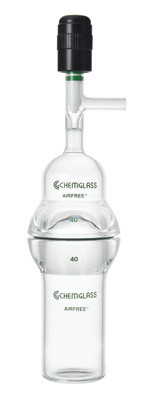| The Home page of ILPI's Safety Data Sheet (SDS) Resource, the leader in SDS information since 1995! | |
| The history and philosophy behind this resource. | |
| A curated collection of books and reference materials concerning Safety Data Sheets and closely related topics. | |
| Paste your plain text SDS into the SDS-Demystifier, and it will be converted into a hypertext-enriched document with links to detailed explanations of each key term. | |
| An extensive list of frequently asked questions about Safety Data Sheets including regulations, content, compliance, and more. | |
| A humorous take on Safety Data Sheet jargon. Fill in the blanks on our entry form to generate a personalized Unsafety Data Sheet to share with your coworkers. | |
| Since 1995, we've maintained this massive curated list of the best places to find Safety Data Sheets on the Internet. | |
| You are here! Way more than a glossary, this hypertext-enhanced resource covers hundreds of SDS-related terms and expert knowledge. Each entry includes both the SDS relevance and links to additional authoritative resources. | |
| Archived results of Safety Data Sheet related polls taken by some of our millions of site visitors | |
| The OSHA regulations behind SDS regulations, including the inspection guidelines and over 400 official interpretations letters under the Hazard Communication Standard | |
| Commercial suppliers of SDS authoring and management software as well as cloud compliance services. | |
| Commercial companies that will create SDS's for your specific needs as well as SDS translation companies. |

Safety signs, banners, and scoreboards? Get yours at Safety Emporium!
Definition
- The Baumé scale is actually two independent and mutually exclusive (non-overlapping) hydrometer scales that cover a) liquids with a specific gravity greater than 1.0 and b) liquids with a specific gravity less than 1.0.
Note: The Baumé scale is NOT a temperature scale.
Additional Info
Named for its inventor, Antoine Baumé (1728-1804), the Baumé scale is actually two scales, one for liquids that are more dense (heavier) than water and one for liquids that are less dense (lighter) than water. The hydrometers are calibrated using the following rules:
For liquids heavier than water: 0 °Bé = distance the hydrometer sinks in pure water 15 °Bé = distance the hydrometer sinks in a solution that is 15% sodium chloride (salt, NaCl) by mass. To convert from °Bé to specific gravity at 60 degrees Fahrenheit: specific gravity = 145/(145 - °Bé) |
For liquids lighter than water: 0 °Bé = distance the hydrometer sinks in a solution that is 10% sodium chloride (salt, NaCl) by mass 10 °Bé = distance the hydrometer sinks in pure water. To convert from °Bé to specific gravity at 60 degrees Fahrenheit: specific gravity = 140/(130 + °Bé) |
Remember: you MUST specify whether you are using the "heavy" or "light" scale when stating a Baumé value. The two scales can not be interconverted - they DO NOT overlap. For example, 25 °Bé (heavy) and 25 °Bé (light) are NOT the same!! | |
The Baumé scale does not directly measure the concentration of a solution. For example, to determine the concentration of nitric acid from a hydrometer reading, you would need to determine the specific gravity and then utilize a table of known specific gravity values for nitric acid at known concentrations.
The Baumé scale has traditional usage in industries where hydrometer readings have long been used to indirectly determine the concentration of a solution. Examples include brewing, wine-making, honey production, and acid production. However, hydrometers and pycnometers can also read specific gravity directly, so use that instead of Baumé. It is a LOT less confusing to have only one scale (specific gravity) rather than two similar, confusing and non-overlapping scales (Baumé)!
SDS Relevance
You may find this term in Section 9 (physical and chemical properties) of Safety Data Sheets for concentrated acids or sugar-containing liquids used by the brewing industry.
We consider the Baumé scale to be archaic (old, outdated) and confusing (because it is really two different scales that do not overlap). We discourage its use anywhere, particularly on SDS's!
By OSHA regulation, the specific gravity is required information on a Safety Data Sheet.
Further Reading
- What is a degree Baumé? at Fred Senese's (excellent) General Chemistry Online web site.
- Hydrometer Units of Density at Monash Scientific includes Baumé, Balling, Brix, Specific Gravity, and the Oeschlé Scales, archived courtesy of the Internet Wayback Machine. It also has a note on temperature corrections.
See also: mass units, volume units.
